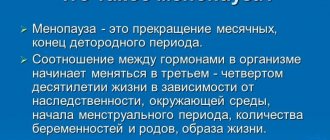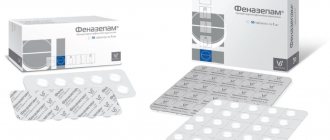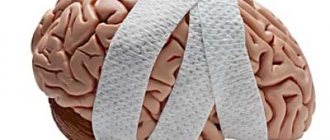A panic attack is a feeling of strong, unreasonable panic, fear, and anxiety. It is accompanied by rapid heartbeat, increased blood pressure, chills, sweating, nausea, dizziness and other symptoms. The person feels as if he is suffocating or that his heart is about to burst.
Due to the inability to control one’s body, fear of death, suffocation, and fear of going crazy arises. The term “panic attack” was established not long ago by the World Health Organization. In our country, until recently, doctors called this “disease” vegetative crisis or cardioneurosis.
Factors that provoke a panic attack (vegetative crisis)
Psychogenic
- The situation of the culmination of the conflict (divorce, explanation with the spouse, leaving the family, etc.)
- Acute stress (death of loved ones, illness or accident, etc.)
- Abstract factors operating through the mechanism of identification or opposition (films, books, etc.)
Biological
- Hormonal changes (pregnancy, childbirth, end of lactation, menopause)
- Beginning of sexual activity, abortion, taking hormonal drugs
- Menstrual cycle
Physiogenic
- Alcoholic excesses
- Meteorological factors, excessive physical activity, etc.
How not to behave with a person having a panic attack
People around you should understand that a person who is experiencing another episode of PA is not at all happy about it. He does not strive for it, he does not receive any pleasure from the state, and, moreover, he does not do all this intentionally. For him, another wave of panic horror is a new test and test of strength. Therefore, it is impossible to laugh at a person or try to explain to him that nothing terrible is happening around him and he is not dying at this moment, is not going crazy. This can only worsen the condition of the victim.
If there is a person next to you who is having a panic attack, you should not leave him alone. In this case, spending the minutes of an attack alone is the last thing a person with PA really wants. It is not necessary to actively talk to him, although this can help distract him from depressing thoughts; it is not necessary to try to hug him or constantly hold his hand tightly. However, you should be nearby. In addition, such supervision during a panic attack will prevent a situation where a person, perceiving himself and the whole world as something illusory, can harm himself. Often, during a panic attack, people go out onto busy roadways, grab dangerous objects (for example, knives or scissors), and so on. Those who are nearby can prevent possible consequences.
During an episode of PA, a person should not be told to pull himself together and abruptly, decisively calm down. This won't have any effect. Scolding and shaming are also not allowed. This attitude will only increase anxiety and add feelings of guilt.
What is a panic attack?
Panic attack syndrome is an attack of acute anxiety (panic) lasting up to 20 minutes, less often longer, accompanied by vegetosomatic and mental disorders. The vegetosomatic component of panic disorder can be represented by dizziness, palpitations, sweating, chills, chest pain; nausea, hiccups, vomiting, and abdominal pain are less common; possible increase in blood pressure. The mental component includes fear (almost always fear of death, as well as fear of heart attack, stroke, fear of stopping breathing, falling, fear of an awkward situation, etc.). Possible irritability, aggression, resentment. So-called conversion disorders are common - a feeling of a “lump” in the throat, lack of air, “aerophagia” (swallowing air), inability to speak, numbness of the limbs. Sometimes there is a feeling of unreality of what is happening. Often during panic attacks, people rush around, scream, call for help, moan, run out into the fresh air, some lie down, afraid to move. Usually, they take a variety of medications: sedatives, antispasmodics, antiangina, antihypertensives, painkillers and, as a rule, urgently seek medical help (calling an ambulance).
The optimal treatment strategy for a panic attack is a combination of psychotherapy and biological therapy. The drugs of choice for panic attacks usually include specific drugs, selected strictly individually, based on all the developmental features of both the nervous system itself and the whole organism. Such selection must always be approached very carefully and carefully and only after examination.
The only cause of a panic attack is the release of a colossal amount of adrenaline into the blood, which results in an overdose of this biologically active substance. Treatment of panic attacks at the initial stage is aimed specifically at regulating the amount of adrenaline in the blood, and then at the symptoms themselves and the fear of their recurrence.
Adrenaline is a biochemical catalyst for stress and is secreted by the adrenal glands. In the body, adrenaline is quickly destroyed, entering into biochemical reactions, the adrenal glands stop producing adrenaline and the “attack on a person” stops. Treatment of panic attacks, fortunately, is quite effective in cases where, under the influence of the shock experienced from unpleasant symptoms, the person himself causes relapses of this condition. The symptoms of a panic attack relate only to the person himself and his well-being, since they are the result of the body’s struggle with unexpected chemical processes. The heartbeat may quicken, it becomes difficult to breathe, as if the throat suddenly “swells”, throwing you either hot or cold. A person may also feel sick, the blood in the head begins to pulsate, or uncontrollable trembling appears. But the most unpleasant feeling is a sudden fear or panic when the feeling of security and trust in the world around us disappears.
Symptoms of a panic attack. What to do about panic attacks?
What is panic and a panic attack?
The word "panic" comes from the name of the ancient Greek god Pan. According to myths, the unexpected appearance of Pan caused such horror that a person “headlong” rushed to run, not making out the road, not realizing that flight itself could threaten him with death. The concepts of suddenness and unexpectedness of the onset of an attack may be of fundamental importance for understanding the origin (pathogenesis) of a panic attack. At the end of the last century, Sigmund Freud described “anxiety attacks,” in which sudden anxiety was not provoked by any ideas, and was accompanied by disturbances in breathing, cardiac activity and other bodily functions. Such conditions were described by Freud within the framework of “anxiety neurosis” or “anxiety neurosis.”
A panic attack is an inexplicable, unbearably painful attack of poor health for a person, which is accompanied by fear or anxiety in combination with various vegetative (somatic) symptoms. Domestic doctors have long used and are now using the terms “autonomic crisis”, “sympathoadrenal crisis”, “cardioneurosis”, “VSD (vegetative-vascular dystonia) with a crisis course”, “NCD - neurocirculatory dystonia”, which indicate disorders of the autonomic nervous system. Term “panic attack” and “panic disorder” have worldwide recognition thanks to the classification of the American Psychiatric Association. Members of this Association in 1980 proposed a new guideline for diagnosing mental illness - DSM-III-R, which was based on specific, mainly phenomenological criteria.
How to diagnose a panic attack?
A panic attack is characterized by an attack of fear, panic or anxiety and/or a feeling of internal tension in combination with 4 or more symptoms:
- Pulsation, palpitations, rapid pulse.
- Sweating. Chills, tremors, feeling of internal trembling.
- Feeling short of breath, shortness of breath, suffocation, or difficulty breathing.
- Pain or discomfort in the left side of the chest. Nausea.
- Feeling dizzy, unsteady, lightheaded, or lightheaded.
- Feeling of derealization, depersonalization. Fear of going crazy or doing something uncontrollable.
- Fear of death.
- Feeling of numbness or tingling (paresthesia) in the extremities.
- Feeling of waves of heat or cold passing through the body.
There are other symptoms, such as: abdominal pain, stool upset, frequent urination, sensation of a lump in the throat, gait disturbance, visual or hearing impairment, cramps in the arms or legs, motor dysfunction. The occurrence of a panic attack is not caused by the direct physiological effect of any substances (for example, drug dependence or taking drugs) or somatic diseases (for example, thyrotoxicosis). During an attack, severe anxiety always occurs, the intensity of which can vary from a pronounced state of panic to a feeling of internal tension. In the latter case, when the vegetative (somatic) component comes to the fore, they speak of a “non-insurance” panic attack or “panic without panic”. The attacks usually last only a few minutes and rarely last more than one hour. The frequency of attacks ranges from several per day to 1 – 2 times per month. Most people talk about the surprise (i.e., nothing foreshadowed it) of the attacks. However, observations make it possible to identify, along with unexpected attacks, also attacks that occur in any “threatening” situation. This situation could be traveling in public transport, being in a crowd or confined space, going outside your own apartment, etc.
A person who encounters this condition for the first time becomes very frightened and begins to think about some serious disease of the heart, endocrine or nervous system, a digestive problem, and may call an ambulance. Starts visiting doctors to identify possible causes of “attacks.” People think that these are manifestations of some disease, and seek advice from various specialists (therapists, cardiologists, neurologists, gastroenterologists, endocrinologists), undergo diagnostics and can conclude that they have some complex, unique disease. Such incorrect ideas of a person about the essence of the disease can lead to the so-called hypochondriacal syndrome, i.e. to the conviction of the presence of a serious illness, which leads to deterioration of the condition and aggravates the course of the disease. Doctors, as a rule, do not find anything serious; at best, they can recommend visiting a psychotherapist, or they begin to treat imaginary diseases (for example, vegetative-vascular dystonia), and sometimes they simply shrug their shoulders and give “banal” advice to change lifestyle, get more rest, spend more time outside, play sports, don’t be nervous, drink calming vitamins. But, unfortunately, the matter is not limited to attacks... The first attacks leave an indelible mark on a person’s memory, which leads to the appearance of an anxiety syndrome of “anticipation” of an attack, which in turn perpetuates the repetition of attacks. Repeating attacks in similar situations (traveling in public transport, being in a crowd, etc.) contributes to the formation of avoidant behavior, i.e. a person avoids places and situations that are potentially dangerous for him. Anxiety that an attack may happen in a certain place (situation) and avoidance of such a place (situation) is called agoraphobia. The increase in symptoms of agoraphobia leads to social maladaptation of a person. Due to attacks of fear, a person is unable to leave home or remain alone, dooming himself to house arrest, thereby becoming a burden to loved ones. Also, these symptoms can be accompanied by reactive depression, especially if a person cannot understand for a long time what is happening to him, does not find help, support, or does not receive relief.
Despite the fact that during attacks there is always autonomic dysfunction and often an implicit nature of emotional disorders, the main methods of treating panic attacks are psychotherapy and psychopharmacology. From the point of view of psychotherapy, the main cause of panic disorder is considered to be repressed psychological conflicts that do not find a way out and cannot be recognized and accepted by a person due to various reasons. With the help of a psychotherapist, you can become aware of a psychological problem, see ways to solve it, and work through a psychological conflict. In ICD-10, panic disorder is located in the class “Mental and behavioral disorders” and has the code F41.0. The best results in the treatment of PD are achieved with the help of psychotherapy or a combination of psychotherapy with drug treatment. The main specialist dealing with these clients should be a psychotherapist who uses specific methods to correct psychological and personal changes. Panic attacks are more likely to occur during times of stress . Researchers believe that some of us have a hereditary predisposition to developing the attacks, since they sometimes occur in several generations of the same family. For reasons that are not entirely clear, panic attacks are more common in women than in men. It's not just a matter of "nerves". In different cases, the symptoms of a panic attack are very individual, but usually they include the following manifestations: difficulty breathing, palpitations, a feeling of suffocation, profuse sweating, pain or discomfort in the chest, dizziness, a feeling of unreality of what is happening, trembling, numbness or tingling in the extremities, nausea, waves of heat or cold. How to help yourself if you have a panic attack.
During an attack, a person is overcome by the fear of death, or the fear of going crazy and committing uncontrollable actions and deeds. The body responds to panic with stress symptoms, including increased heart rate and breathing, increased blood flow, weakness, and dizziness. You can begin to help yourself in cases of panic in the following ways:
Try to calm down. Take note of such thoughts (or write them down on a piece of paper and carry them with you) and repeat them: “No one dies from a panic attack,” “There’s nothing wrong with me, it’s just a panic attack.” I know that this is not a heart attack and I am not in danger of death or insanity. It will end quickly." This self-talk is part of an approach called cognitive behavioral therapy. It relieves anxiety, and after this, other symptoms of the attack begin to subside. Moreover, such self-talk reduces the fear of recurrence of panic attacks in the future and reduces the overall level of anxiety, thereby reducing the likelihood of their recurrence.
Deep breathing. In a stressful situation, a person’s breathing becomes shallow, and inhalations become short, frequent, and shallow, which leads to hyperventilation of the lungs. This, first of all, can provoke panic. You need to pay attention to your breathing and take control of it. We begin to breathe deeply “inhale-exhale” in such a way as to achieve a calming effect, namely, inhale shorter, exhale longer and pause after it. According to physiologists, “inhalation is associated with excitation of the nervous system, and exhalation is associated with its inhibition.” Next, we lengthen the exhalation until it becomes twice as long as the inhalation, and then lengthen the duration of the pause. It is usually half an inhalation. The calming breathing pattern can be represented as follows: “2+2(2); 4+4(2); 4+6(2); 4+7(2); 4+8(2); 4+9(2); 5+9(2); 5+10(2); 6+10(3); 7+10(3); 8+10(4); 9+10(4); 10+10(5)". In these formulas, the first number means the duration of inhalation, the second – the duration of exhalation, the third – holding the breath after exhalation.
Techniques that will help distract the mind from panic fears and sensations.
Rubber band method. You can wear a rubber band around your wrist. When you feel a panic attack coming on, pull it back and let it hit your arm with enough force. A sharp painful sensation will distract attention from the approaching symptoms and give time to use another technique to control fear, for example, slow breathing. And sometimes the sensation itself is enough to stop the attack.
Check. Some people find it helpful to distract themselves from the oncoming attack if they start counting objects. For example, how many buttons are on your clothes or those of those standing next to you, how many cars passed by. Or just start multiplying numbers in your head.
Talk to a stranger, ask him to tell you how to get to the nearest stop or metro station. The main thing is to focus on another task.
Notebook. Keep a special notebook in which during an attack you will write down information: time, place where you are, who and what surrounds you, the situation you are in, thoughts and feelings that arise in you, your reaction in this case.
Learn to relax. To do this, you can master any relaxation method, for example, progressive muscle relaxation according to Jacobson. When you learn to quickly relieve muscle tension, you can easily reduce your anxiety level. Since anxiety and relaxation are exactly opposite states, they cannot exist at the same time, so relaxing muscles in situations that cause tension can reduce anxiety levels, get rid of negative feelings, make it easier to perceive stressful situations and prevent panic attacks.
https://prostozhivi.ru/stati/article_post/simptomy-panicheskoy-ataki-chto-delat-s-panicheskimi-atakami
Differential diagnosis
Below are the conditions and diseases with which panic attacks must be differentiated:
diseases of the cardiovascular system
- arterial hypertension;
- arrhythmias;
- angina pectoris;
- mitral valve prolapse;
- idiopathic cardiomyopathy;
respiratory system diseases:
- exacerbation of chronic pulmonary diseases;
- acute asthmatic attacks, bronchial asthma;
- repeated pulmonary embolisms;
diseases of the endocrine system:
- hyperthyroidism;
- hypoparathyroidism;
- hyperparathyroidism;
- hypoglycemia;
- Cushing's syndrome;
- pheochromocytoma;
diseases of the central nervous system:
- temporal lobe epilepsy;
- Minière's disease;
- hypothalamic syndrome;
- sleep apnea syndrome;
- schizophrenia;
Conditions associated with taking medications:
- taking stimulant medications for a long time;
- drug withdrawal syndrome.
Are you having a panic attack: what to do?
You can help yourself during a panic attack.
- Calm your head.
Remember that a feeling of panic is just a reaction of the body, which is greatly exaggerated. Repeat to yourself or write on a piece of paper that you will always have with you: “The panic will go away, everything will be fine with me, I can handle it.” Take it out and re-read it. It will be even better if you print out for yourself the information that you find most reassuring.
- Relax and try to switch your attention to something external.
Stay in the present tense, slow down, relax. Switch from thoughts about what might happen to what is happening to you here and now. A simple technique that can help you with this is, for example, counting the buttons on the clothes of the person next to you, or reading a word backwards. Remember the children's game where shorter words are formed from the letters of a long word. (DO NOT LEAN: elephant, dream, nose... Who is bigger?)
- If possible, create physical comfort for yourself.
If during a panic attack your hands and feet begin to get cold, try to warm them, for example, under hot water. You can even take a hot bath if you are at home at that moment. But this can only be done if your extremities are cold: if you feel feverish and have high blood pressure, you should not do this.
- Reduce the image of anxiety.
Mentally imagine your anxiety scale. (It may look like a thermometer or numbers on a scoreboard with gradations from 1 to 10). Consciously imagine your anxiety level decreasing on the scale.
- Stay where you are.
Stay in the situation where the symptoms started. Remember that if you run away, the next time you panic will be more difficult to survive. Consciously relax your muscles and take a few deep, calm breaths.
- Tablet under the tongue.
If you are already receiving psychopharmacological treatment from a psychiatrist or psychotherapist, then carry the tranquilizer prescribed for you with you. Its presence in itself already has a calming effect. Take it only if necessary, if you feel that all the above methods were truly ineffective. Place the tablet under your tongue and wait for it to be absorbed into your bloodstream. The blood supply to the oral cavity is more intense than to the gastric mucosa, and therefore the drug will take effect within a few minutes.
- Breathe evenly and measuredly.
Consciously monitor your breathing. Breathe evenly and measuredly, even if you want to breathe more often. Frequent breathing can cause hyperventilation syndrome, when with an increase in breathing frequency, feelings of fear and anxiety increase, which in turn will force you to breathe even more often, which will close the vicious circle of fear.
- Accept your feelings, let them flow through you.
Be an outside observer. What are your feelings like? Perhaps these are some colors, sounds, sensations in the body? Watch how they change.
This recommendation is more suitable for women. If you are a man and don't understand this recommendation, just skip it.
- Get back to business.
The best treatment is to get busy. Think about what you were doing immediately before the onset of symptoms, focus your attention on that, and continue what you are doing if possible.
Addition about breathing.
Breathing quickly is really dangerous and is not recommended, but mastering special breathing, where the inhalation is 2-3 times shorter than the exhalation, is useful. So, with this kind of breathing, the inhalation can be deep, strong (let’s say, on the count of 1-2-3), after which, after a short pause (on the count of 1-2), a long (6-9 seconds), long exhalation is made... Inhalation - through nose. Exhale through half-clenched lips. When you inhale, the stomach retracts, when you exhale, it protrudes - we breathe with the diaphragm.
If panic attacks bother you, start practicing this type of breathing, master it to the point of automaticity, so that in a critical situation you start doing it immediately, almost without thinking.
Treatment of panic disorders
A panic attack with its dramatic manifestations, especially in the first attacks, is often a reason to call an ambulance. The optimal treatment strategy for a panic attack is a combination of psychotherapy and biological therapy. The drugs of choice for panic attacks usually include specific drugs, selected strictly individually, based on all the developmental characteristics of both the nervous system itself and the whole organism. Such selection must always be approached very carefully and carefully and only after examination.
Can schizophrenia develop during a panic attack?
A panic attack is a neurotic disorder in which the development of psychosis such as schizophrenia is impossible.
How are panic attacks treated?
A course of treatment for panic attacks is prescribed by a psychotherapist. And he begins it by explaining the nature of this disease. When the patient begins to understand the mechanism of development of a panic attack and ceases to be afraid of its symptoms, his level of tension subsides. But panic attacks are always based on neurosis caused by unresolved intrapersonal conflict. Therefore, the course of treatment also includes working with neurosis. In addition to psychotherapeutic sessions, the doctor may recommend sanatorium treatment.
The cause of a panic attack can be organic depression (develops with morphological changes in the brain). In this case, organic depression is treated.
The power of non-action
Sometimes human behavior, reactions to various events, are quite funny. It is clear that an attack of this kind is an irrational fear that has no obvious reason. Even after fainting, the man from our example never fell, and his legs did not give out, and his heart did not jump out of his chest. Why do anything then? If it were fear with a clear reason, everything would be worse. During robberies, road accidents and plane crashes, people are in real danger, so it is somewhat unreasonable to contemplate such an emotion. We are very lucky. We are wondering how to overcome panic attacks on our own. This is something phantasmagorical. Suffering is very real, but its source is in the psyche. If there had been a stroke or sarcoma, everything would have been much worse.
Last time our hero made as many as three runs. It is possible that he was very tired. Let's say this is the second day of practice. Now we immediately set the task with an excess. 120-130 steps is somehow not enough. Now we go to the limit, to the point where an attack will certainly happen. Everything that is connected with the psyche is “magical”. She can also try this trick - there is a desire to get into a wave of panic, but panic, as luck would have it, does not arise. It's OK. Sooner or later, it will come, appear. You just need to be patient and wait a long time for it. The answer to the question of how to overcome panic attacks is usually associated with medications, breathing exercises, and less often with self-massage or meditation. These are actions. Turning around and abruptly going home, fearing fainting, is also an action. Constantly - actions. Is it worth bothering yourself so much? You can do nothing at all. The attack has begun. So what? A state of fear without an explainable reason. Why explain this? We find any bench and relax. You can walk slowly. It is very effective to look at what we usually do not notice. For example, find any tree with your eyes. Now look at all the shadows it casts. Usually the eyes “collect” everything that is bright - the sun’s reflection on the foliage, the contours of the branches. The entire subject part of the forms. Set yourself the task of seeing only the shadows, only the shadow side of the tree. Believe it or check it if you want. If you can not think about the attack for ten minutes, but look at the shadow side of the world, then you yourself will be surprised to remember that you are having an attack and you seem to be supposed to count your pulse and be out of breath.
Worth seeing: Breathing exercises for panic attacks
On the same day, when we already know better what a panic attack is and how to cope on our own, we can do another practice. This should be done not at the time of the attack, but in intervals. Everything is very simple and effective. Try imagining yourself without a head for 30 minutes. You can walk or sit in a chair or on a park bench. Doing such visualization for just 3-4 days gives an amazing feeling of lightness and some weightlessness. This method is no less effective. You need to imagine a world without yourself. Everything is the same - cars drive on the roads, children rush to school, dogs walk with their owners and wipers pretend that they are working, but you are not there. An amazing feeling... The world can easily get by without you. It may be offensive, but it's true.

It is worth recognizing the fact that a panic attack in most cases has no obvious cause.
Continuing our work, we need to add to the list of daily practices that will help you quickly cope with panic attacks on your own, all those that promote relaxation. This usually means lying on the floor and listening to special music. There's nothing wrong with that, but it's not the only way. Exercises that involve a significant increase in load on the muscular system, followed by relaxation, help you relax most fully. Then it happens by itself.
How to overcome panic attacks
In fact, there are very few effective methods. This is good news because there are few of them, but the ones we will describe are truly effective. The first step is to recognize that this is a problem and take it seriously.
The person from our example is fine - he experiences attacks constantly and does not need to be told that it is serious. The rest are recommended to sacrifice a week of their lives and work with fear before it works with its carrier.
So, the man leaves the house and after about 100 meters of travel he experiences everything described above. You don’t have to be very shrewd to understand that he’s returning home right away. Let's not rush to criticize. He came back and did the right thing. Now you need to sit down calmly and think about when this happened. In this case, we are only interested in footage. And even better - the number of steps. 100 were made? So this is quite real. And in general, the likelihood that he will fall and lose consciousness right away is extremely small. Whether there is danger or not, you can take 100 steps. But why exactly 100? Is it possible 110?

To overcome panic attacks, you need to learn to relax and not think about bad things.
Without giving ourselves any slack, we immediately set ourselves the task of 110 and pass. We don’t even think about how to calm down during a panic attack. We won't do that. As soon as it starts, we’ll immediately chicken out and return to a safe apartment. In the meantime, let's go and count the steps. 100, that's 110. To be honest, you can pass 120. That's what it does. ABOUT! My legs are already giving way. Well?.. There is no shame in returning home - there is already a positive result. We're coming back...
Worth seeing: Which doctor should I see for panic attacks?
A little respite. What is going on? A person walks around the house without falling. Can do 50 squats, take a shower, even cook his own food. But on the street some wheels get stuck and this unpleasant reaction occurs. I wonder... What will happen if you don’t go further and don’t return home right away? How long did you manage to stay there? 5 seconds, no more, and then there was a turn and flight. Why not set yourself the task of standing for 20 seconds? Let's try. We stand calmly for 120 steps and 20 seconds at the moment when the attack begins. Again, we don’t think about how to overcome a panic attack. Instead, we are stalling for time.
Indeed... You can control the situation, but then you lose your strength, the attack seems to consume energy. Last experience for today. This time we will take 130 steps. Let's stop and wait for the attack, but we'll meet it with very specific practice. Perhaps the best answer to the question of how to calm yourself during a panic attack. We noted above that an attack changes breathing. It becomes harsh and superficial. Let's try to counteract this with deep exhalations. We don’t think about inhalation at all. The body will always do it on its own. Our task is to exhale correctly. In this case, it does not matter how long the exhalation lasts and how it relates to the inhalation in time. We exhale long, slowly and even with rapture. This alone can counteract panic.








